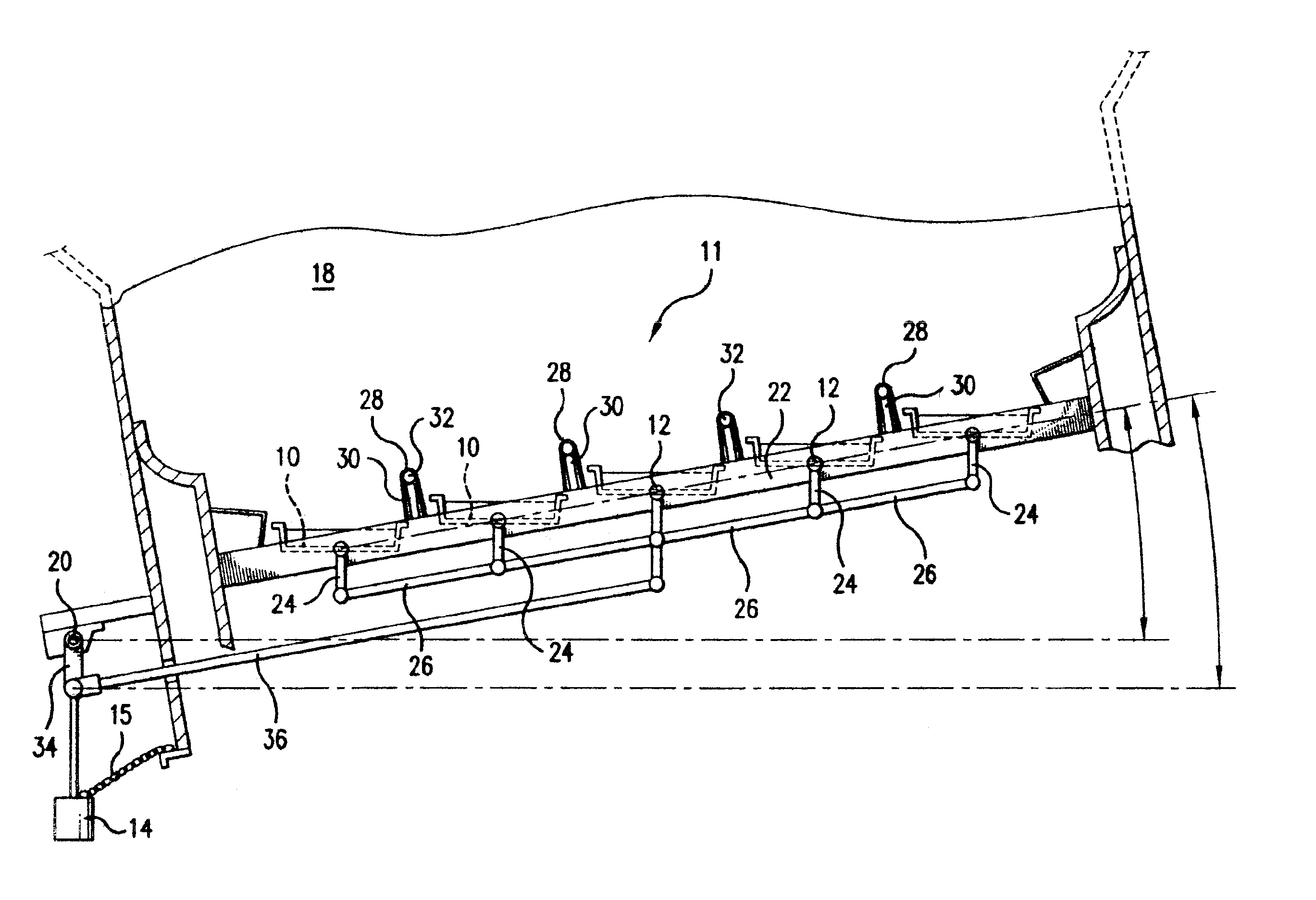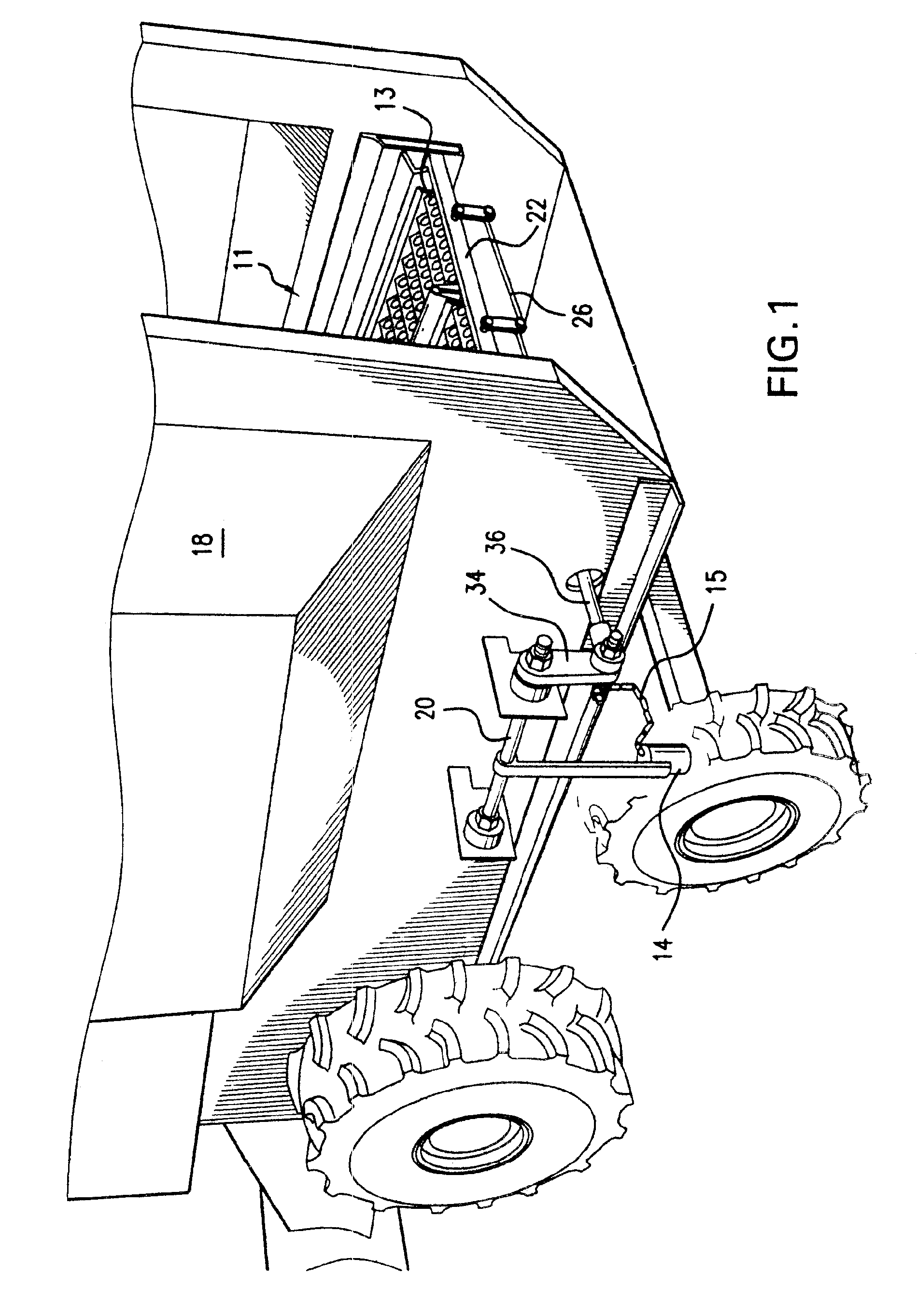Floating combine sieve assembly
a technology of combine sieve and sieve body, which is applied in the direction of baling, solid separation, agriculture tools and machines, etc., can solve the problems of reducing the effectiveness of the separation between chaff and threshed grain, cumbersome operation, and complicated mechanism and expensive manufacturing. , to achieve the effect of increasing efficiency, preventing chaff from falling, and increasing separation efficiency
- Summary
- Abstract
- Description
- Claims
- Application Information
AI Technical Summary
Benefits of technology
Problems solved by technology
Method used
Image
Examples
Embodiment Construction
FIG. 1 shows a combine 18 having a leveling mechanism for a sieve assembly 11 as herein described. In a combine's basic operation, the combine 18 cuts the crop, threshes the crop, and then delivers the threshed crop onto a sieve 11 for separating the grain from the chaff. This sieve 11 separation is a gravity separation in which the desired grain particles are smaller than the chaff. The sieve 11 has a top surface with a plurality of oblong holes 13 which are large enough to allow threshed grain to fall through, yet not large enough to allow chaff to fall through. The oblong shape of the holes 13 allows the grain to efficiently fall through the sieve 11 by preventing the grain from gathering on top of the sieve 11. The oblong holes 13 are angled toward the back of the combine so that as air is blown upward through the holes 13, the chaff is directed to the back and eventually out of the combine 18. These angled holes 13 allow for efficient cleaning of the grain because the chaff is ...
PUM
 Login to View More
Login to View More Abstract
Description
Claims
Application Information
 Login to View More
Login to View More - R&D
- Intellectual Property
- Life Sciences
- Materials
- Tech Scout
- Unparalleled Data Quality
- Higher Quality Content
- 60% Fewer Hallucinations
Browse by: Latest US Patents, China's latest patents, Technical Efficacy Thesaurus, Application Domain, Technology Topic, Popular Technical Reports.
© 2025 PatSnap. All rights reserved.Legal|Privacy policy|Modern Slavery Act Transparency Statement|Sitemap|About US| Contact US: help@patsnap.com



